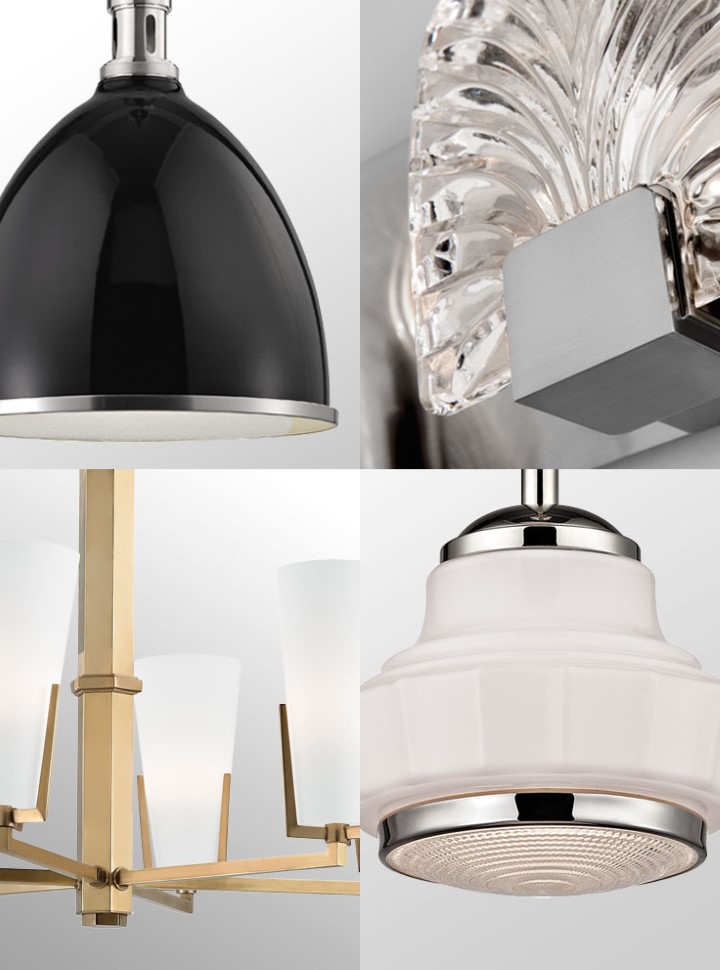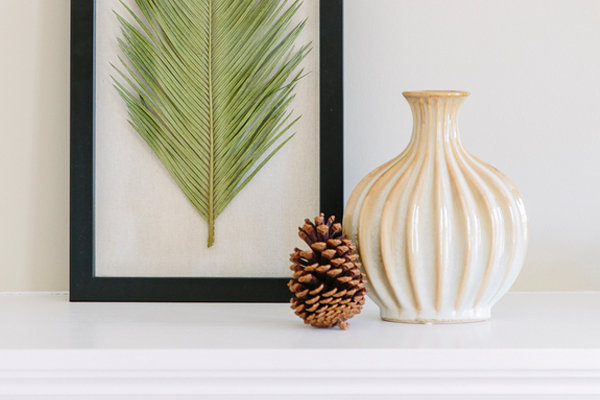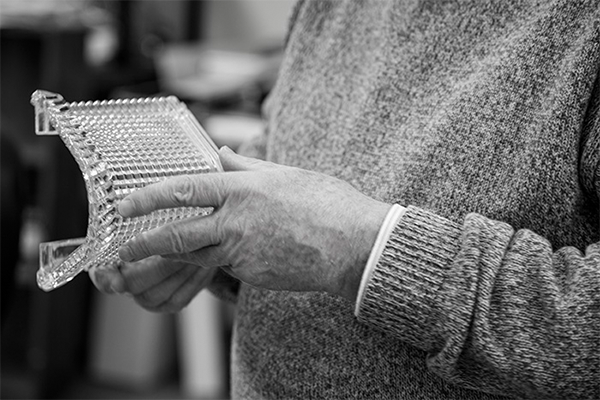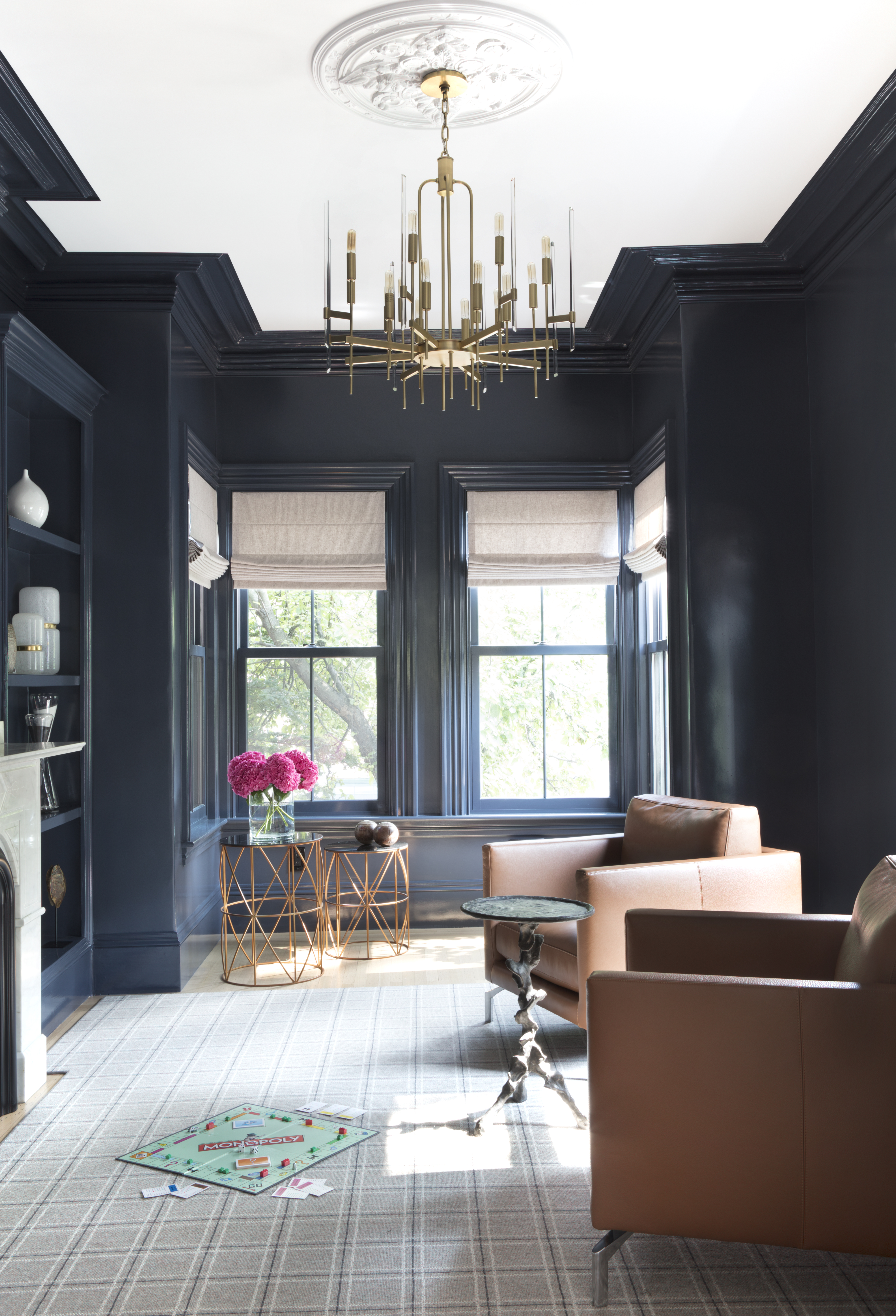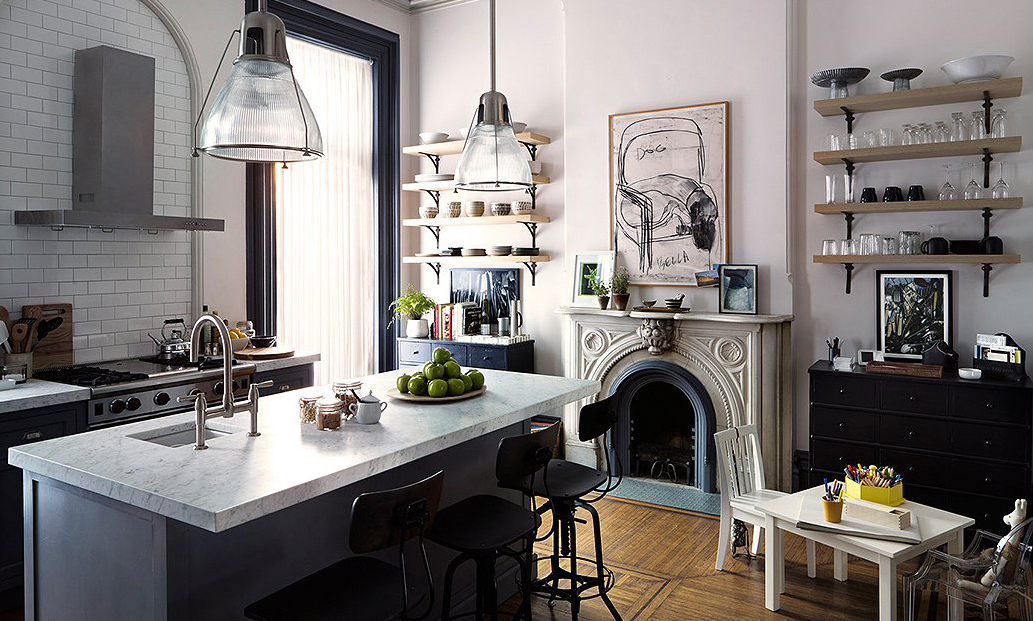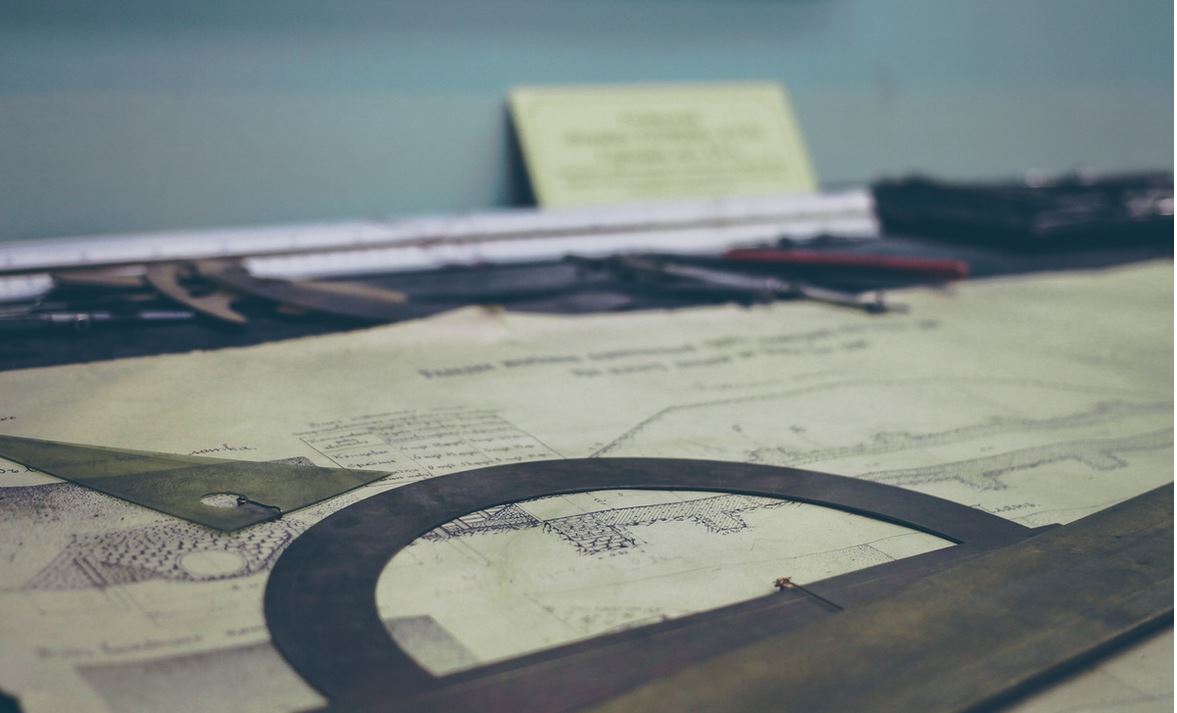What do the public roads of Ancient Rome, the tweedy blazers gentlemen have been wearing for more than a century, and today's hot kitchens and bathrooms have in common?
They all use the spiked pattern of herrringbone.
The lovely, ribbed pattern gets its name from its visual kinship to the skeleton of a herring. It's similar to chevron. Where the diagonal lines fully connect at their apex and nadir, creating an even zigzag, in chevron, herringbone patterns have the lines stacked against one another, forming the same impression. The result's a bit more complex, a bit less direct.

On the left is the chevron pattern, which goes back as far as 1800 BC. On the right is herringbone.
Image on left via House & Garden UK. | Image on right via A Beautiful Mess
See the difference?
Before its recent uptake in home renovation, the subtle pattern was most commonly found in men's clothing. Blazers and trousers often bore the pattern.

Rob at Dressed to Ill shows how to work it with a golden cashmere sweater and a gentle plaid in this lovely close-up.
But there's nothing inherently gendered about the pleasing pattern. At Fashion Week in Paris earlier this year, women in bold herringbone-patterned overcoats and tight suits hit the runway in a projection for Fall 2015.

Via T: The New York Times Style Magazine | Image by Firstview
Everything old is new again, the saying goes. Well, that couldn't be more true than in the present case, because it turns out herringbone has been around a looooong time. In textiles, it goes back to ancient Egyptian times. In laying down stone, we see it in the Viae Publicae, the public road system the Roman Empire built for routes between big enough cities, wide enough rivers, and the sea. It's opined that the pattern was used to stack and secure the vaulted bricks in the seemingly impossible construction of Il Duomo de Firenze in the 15th century, before Columbus sailed the ocean blue.

Il Duomo in the snow, Florence
But it's not so popular and so ubiquitous just because it's swell to look at. Called opus spicatum ("spiked work") by the Roman road-layers, herringbone's pattern is structurally enduring. It sustains; it supports.
Will Belcher brings his architectural knowledge to bear on the subject in his article, "Opus Spicatum: A History of Herringbone."
The fairly simple pattern is distinguished from a plain chevron pattern by a break at the arris, or point of reversal, creating an intensely strong geometric matrix of interlocking units. When the chevrons are pointed in the direction of traffic the pattern becomes extremely strong under compression as the chevrons are able to spread the load over twice as many bricks. This inherent ability to absorb compression of movement makes it a remarkably resilient paving pattern. This pattern of interwoven chevrons can be traced back to the Egyptian textiles and metalwork.
All of which means that it's not just visually sharp—it's also a smart choice.
Here's the thing: once you've settled onto using an intense pattern like herringbone at home, it's unwise to "compete" with it by selecting other pieces with detailed, patterned work.
Offset the visual impact of herringbone with simple, cleanlined accents. Or, complement the intense pattern with a subtle one, used only in a concentrated space. For example, the frosted, hand-cut honeycomb pattern on the mouth-blown glass tubes of our Wentworth sconce would dazzle as a complement to herringbone-tiled walls in a bath. (And if you missed it, check out the incredible black chevron and herringbone tile work in our last post.)
Or, go with the grain with the chevron-like angles of Lyons above an island complementing the zig-zag of a luscious marble splash.
Laying down wooden floorboards in a herringbone pattern? Conjure the feeling of an industrial loft by pairing them with chic vintage lighting fixtures with exposed-filament bulbs.
Check out more herringbone pattern ideas in our Pinterest board here.
.png)
What do you think of the trend? Does it work better in fashion or home interiors?
Update: The prestige of this storied pattern goes on. It's been discovered since the time of this post's initial writing that the floors were herringbone in the studio where David Bowie recorded his famous song, "Heroes."









